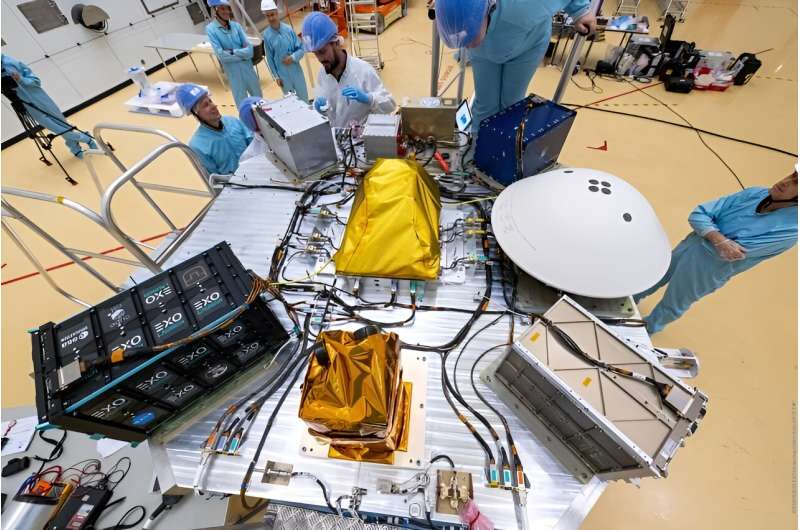This selection followed ESA's announcement of opportunity, which offered a launch to low Earth orbit for experiments up to a total mass of 80 kg and release of payloads with a combined mass of up to 800 kg.
The nanosatellite will measure weather and climatic phenomena from space using a GPS and Galileo navigation signal reflectometer (GNSS-R) and a microwave radiometer developed by students and will observe the Earth to monitor ice and soil moisture. Also, it will locate and track vessels to prevent accidents and to study interferences in the frequency range used.
All this will be accomplished with experimental technology entirely designed at the UPC and a new deployable antenna. Once in orbit, the antenna will perform some of the measurements required: radiometric data and data aimed at mitigating radio frequency interferences using a GPS and the GNSS-R instrument.
Seven years of work by more than 90 students
The nanosatellite is part of the European Space Agency's (ESA) Fly Your Satellite! program, which gives university students the opportunity to design, build and launch their own satellites into orbit.
Designing, building and testing CubeCat-4 has involved more than 90 bachelor's degree, master's degree and doctoral degree students from several disciplines over seven years. Three of these students recently visited the Kourou spaceport to perform the final checks: the definitive integration of the EXOpod Nova module (within which CubeCat-4 was ready for launch) with Ariane 6.
Back in March, a part of the team traveled to Berlin, Germany, to complete the previous integration of CubeCat-4 with the EXOpod Nova module.
Two members of the team were present at the launch site of Ariane 6 in French Guiana: Luis Contreras—a systems engineer, a student on the UPC's doctoral degree in Aerospace Science and Technology, and team leader—and Júlia Alós—a master's student in Telecommunications Engineering at the ETSETB.
CubeCat-4 is part of the CubeCat series of small satellites and payloads that have flown or will fly into space with missions developed entirely by students and faculty at the NanoSat Lab.
Provided by BarcelonaTech (UPC)



